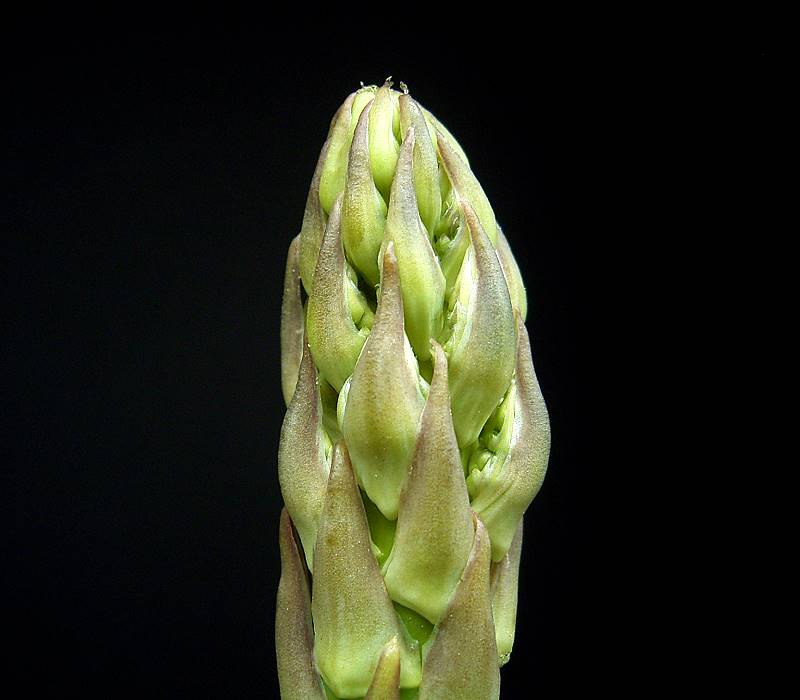My friends Deb & John (you can visit their vineyard's
website) really got into fermentation when they a) became farmers - grape farmers - and b) when they found themselves with a bumper crop of garden produce. Because of their success, I decided to try my hand at veggie fermentation too.
I found I too had a bumper crop of veggies when my friends Jenny (you can read her
poetry blog) and Stephen left their dog and their CSA box with me when they went on vacation. What to do with all that produce??!!
Fermentation is an ancient form of preservation. You salt things and let them sit. Bacteria that like the salty environment start to multiply, producing lactic acid along with quite a number of other "stinky" compounds. Not only does all this bacterial action preserve the food, it makes it tastier too!
 |
| Wait, that's supposed to be edible? Yes, it looks (and smells) funky but it's definitely edible. |
I won't tell you it looks pretty while it's happening - it definitely doesn't! But, the end result is seriously delicious.
I used a big crock (as you can see in the photo). You need something non-reactive. Acid is produced and crockery, along with glass, stainless steel, and some plastics, won't react under the acidic conditions. A crock is big, which means that when things get bubbling, your fermentation will be less likely to escape.
I selected this recipe rather than standard sauerkraut because I had cabbage and some HUGE beets. Come March, I'm going to give classic sauerkraut a try (as John will tell you, cabbage is super-cheap at St. Patrick's Day making that a great time to make your own sauerkraut).
This is where a food processor, for the shredding of the cabbage and beets, is a huge time saver. You can do it by hand, but it will take you a while. Beets are also pretty messy if you have to shred them by hand.
 |
| Fried eggs on toast with curtido rojo. That's a yummy breakfast. |
This fermented cabbage is delicious with grilled or roasted meats and eggs. The funkiness does not carry over into the flavor. Mostly, it's pleasantly tart and spicy.
Curtido Rojo (Guatemalan Fermented Vegetables)
(makes enough to fill about 4 pint jars)
1 head cabbage, red or green (it will all turn red anyway)
2 large beets, peeled and shredded
1 large red onion, thinly sliced
½ pound green beans, cut into ½" pieces
3 cloves garlic, minced
2 jalapenos, seeded and minced
½ Tablespoon whole cumin seeds
1 Tablespoon grated orange zest
1 Tablespoon dried oregano, crushed fine in your hand
½ teaspoon red pepper flakes
1-2 Tablespoons pickling salt
2 bay leaves
Remove any blemished leaves from the cabbage and discard. Reserve a couple of the next layer of leaves for covering the cabbage while it ferments.
To shred the cabbage, quarter, cut out the tough core, and shred, like for cole slaw.
Combine all the veggies, garlic, jalapenos, cumin seeds, orange zest, oregano, and red pepper in a large bowl. Sprinkle with 1 Tablespoon of salt to start. Massage so that vegetables start to release their moisture. Taste that cabbage. You should be able to taste the salt but it shouldn't be overpowering. If it doesn't taste salty to you, sprinkle on a bit more salt and repeat the massage and taste until you get to a spot that tastes pleasantly salty to you. Can't take the salt away once it's in there, so go slow.
Let veggies sit until you have a pool of brine in the bowl, up to 45 minutes.
Place the bay leaves in a large crock. Cover with the contents of the bowl. Pack down well to get rid of air pockets. When you press them down, they should be covered with the brine. Cover with the reserved cabbage leaves, place a small plate in the crock and weight it down to keep veggies under brine. Place on a baking sheet to catch any overflow while it ferments. For the fermentation stage, place in a cool place out of direct sunlight. Check daily to make sure the veggies are submerged. Press them down again if they aren't covered in brine. After a few days, it will start to foam and look pretty ugly (see photo above). That's normal. If any mold forms, spoon it off. It's also normal for yeast to start growing on top. Yeast is white and breaks into little bits when you disturb it. No need to remove it.
Taste the cabbage after about 4 days. It will just be starting to get a tang. I fermented mine for 2 weeks and it had the perfect amount of sour for me. Experiment and ferment it to the acidity that you like.
To store, pack veggies into pint jars. Cover top of jar with a small square of parchment or waxed paper, then cover with jar lids and screw down but not too tight. If you store it in the fridge, fermentation should stop, but it's best to give any gas a way out - so don't screw the lids down too tight. I found that after the jars went in the fridge, the cabbage absorbed all the brine. At this point you shouldn't have any trouble with mold so that's OK.
Adapted from
Fermented Vegetables by Kirsten K. Shockey & Christopher Shockey, Storey Publishing, 2014.





















